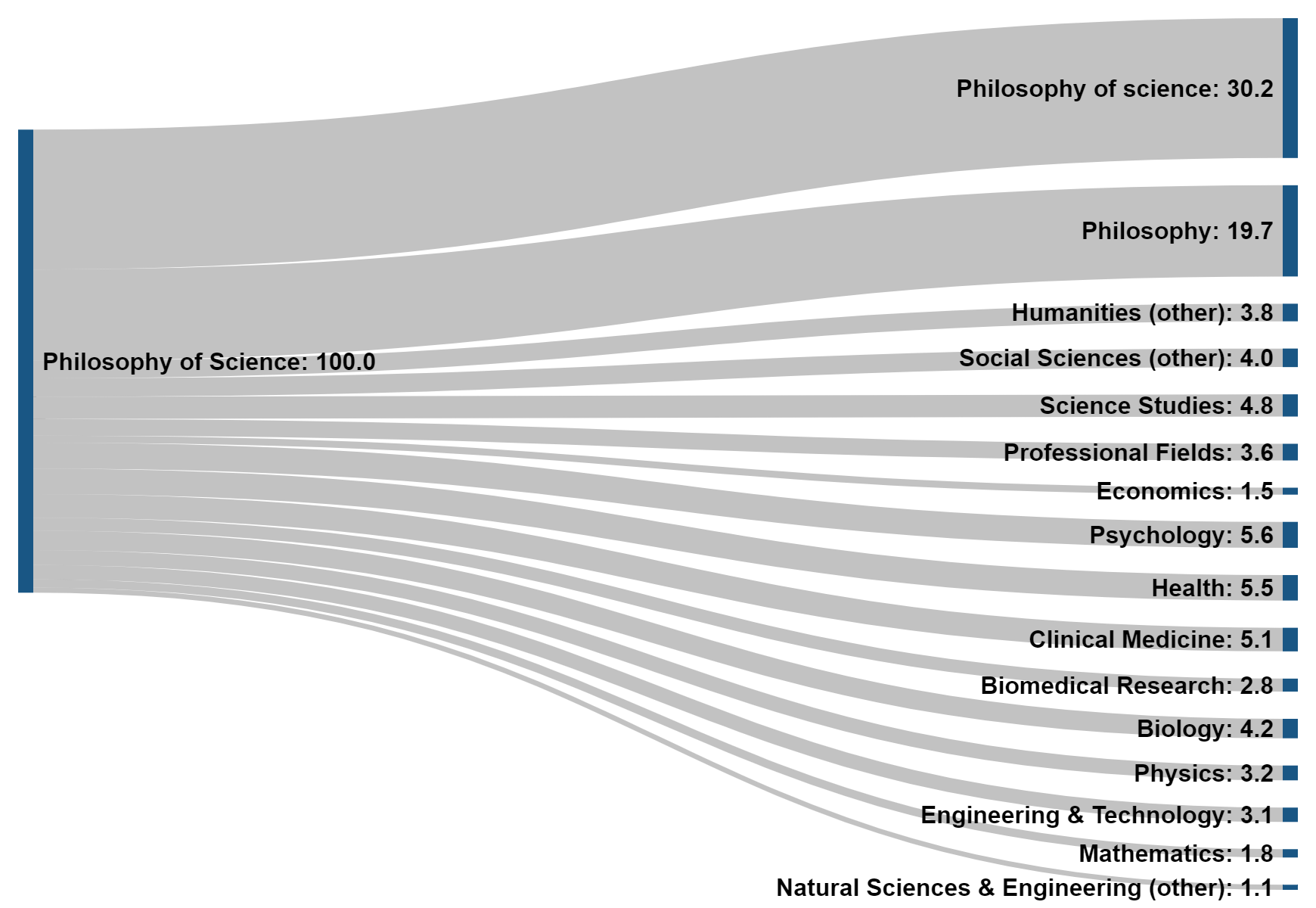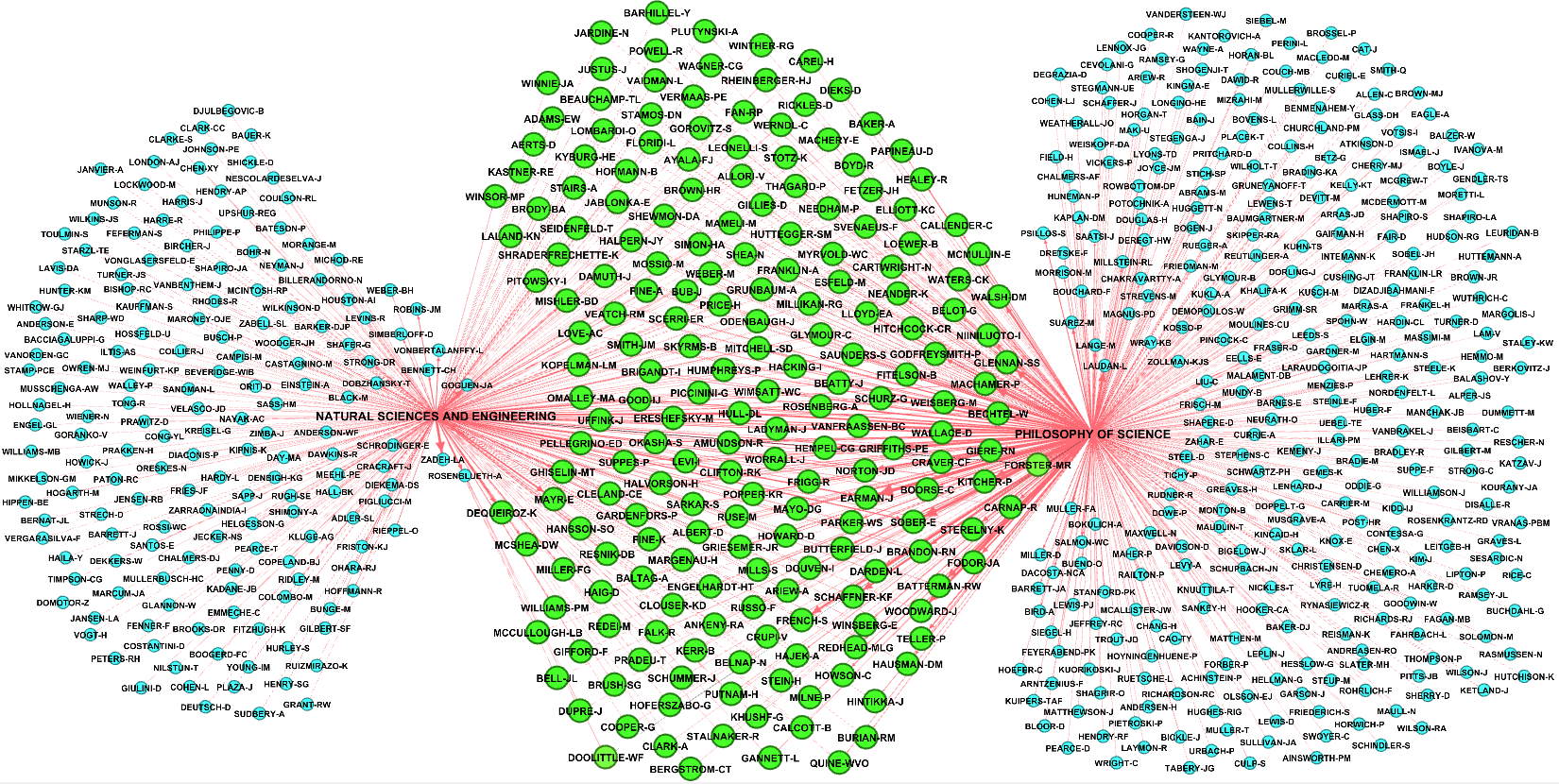Which Scientific Disciplines Cite Philosophy of Science? (guest post)
What is the impact of philosophy of science on science?
In the following guest post*, Mahdi Khelfaoui (UQTR), Yves Gingras (UQAM), Maël Lemoine (Bordeaux), and Thomas Pradeu (Bordeaux) discuss recent empirical research of theirs on this question.

[Hearson McArthur Microscope, c.1930s, detail]
Which Scientific Disciplines Cite Philosophy of Science?
by Mahdi Khelfaoui, Yves Gingras, Maël Lemoine, and Thomas Pradeu
Whether philosophy of science is, should be, or could be, useful to science is a longstanding debate that has been recently reignited by philosophers of science as well as by scientists. Advocates of a wider diffusion of ideas and tools developed in philosophy of science, and of a tighter relationship between philosophy of science and the sciences, have mainly relied on individual examples of philosophers of science who have made significant philosophical contributions to understanding and resolving scientific problems, clarifying scientific concepts or critiquing scientific assumptions. However, few empirical analyses have tried to assess, on a larger scale, the extent to which the knowledge produced inside the field of philosophy of science has actually been used, or at least referred to, in the scientific field.
In a recently published paper in Synthese (preprint available here), we tried to shed light on this issue from a quantitative perspective, by measuring the visibility of philosophy of science papers in the sciences, through citations made to philosophy of science journals by natural sciences, engineering and mathematics (STEM) as well as by social sciences and humanities (SSH) disciplines. We defined the field of “philosophy of science” by selecting 17 major philosophy of science journals included in the Clarivate Analytics Web of Science database, which also contains data on nearly twenty thousands journals covering all STEM and SSH disciplines. Explored at the levels of disciplines, journals and authors, our bibliometric analysis allowed us to unveil several features of the relationship and interface between philosophy of science and a large and diversified array of scientific disciplines.
Which scientific disciplines cite philosophy of science journals?
We started our analysis by assessing the visibility of philosophy of science in other sciences at the discipline level. In Figure 1, an alluvial chart shows the distribution of citations from different STEM and SSH disciplines to philosophy of science, between 1980 and 2018. We observe that 30.2% of all citations to philosophy of science come from that field itself, and that 19.7% come from the rest of philosophy. All the other SSH disciplines acount for 28.8% of citations. Psychology, health and science studies are the three SSH disciplines that cite the most philosophy of science journals. Finally, STEM disciplines account for 21.3% of citations to philosophy of science journals. Clinical medicine, biology and physics are the three disciplines where philosophy of science is the most visible. Overall, about half of all the citations made to philosophy of science journals come from outside the field of philosophy, broadly defined (i.e., including philosophy of science). Thus, contrary to what many may think, our data show that philosophy of science as a specialized field is far from being autarchic and closed on itself and philosophical ideas about science do percolate through many scientific disciplines.

Figure 1 – Distribution of citations to philosophy of science journals coming from other disciplines between 1980 and 2018 (%)
Which scientific journals cite philosophy of science journals?
The distribution of citations within a set of journals is not homogeneous and rather follows in general a power law such that a minority of journals account for the large majority of the citations received. Our analysis shows that the affinity between STEM and SSH citing journals and cited philosophy of science journals strongly depends on the topics addressed by both categories of journals. For instance, in disciplines such as biology, physics or psychology, the main journals citing philosophy of science tend to focus on the theoretical foundations and principles of their discipline, thus providing more opportunities for citing papers of a conceptual and philosophical nature than do scientific journals publishing only technical or applied contributions. Not surprisingly, medicine and health journals tend to cite philosophy of science journals that publish papers on ethical and bioethical issues. In the field of science studies, philosophy of science journals are mainly cited by sociology and history of science journals, which is not surprising since philosophy of science and science studies are closely linked, especially through the interdisciplinary field of History and Philosophy of Science (HPS). The relationships between citing STEM and SSH journals and cited philosophy of science journals can be further explored and visualized through journal citation networks. We present in Figure 2 a network of STEM citing journals and philosophy of science cited journals that illustrates the citation affinity between journals discussed above. A community detection algorithm allowed us to identify coherent subsets that generally corresponds with specialties.

Figure 2 – Network of STEM journals citing philosophy of science journals (1980-2018)
The visibility of philosophers of science in other sciences
What are the characteristics, in terms of citation and publication patterns, of authors who get their philosophy of science papers cited outside their field? Figure 3 shows the network of citations from STEM and philosophy of science fields (each represented by a single node) to authors who have published at least one paper as a first author in one of our 17 central philosophy of science journals before 2018. The network is strikingly structured in three distinct communities of authors. The community on the right side of the network is composed of authors who are mostly cited by philosophy of science journals, meaning that their articles do not transcend the boundary of their field. The community on the left side of the network represents authors of philosophy of science articles who are mainly cited by journals of STEM disciplines. It mainly includes practicing scientists who have also published one or several articles in philosophy of science journals.
The community at the center of the network is the most interesting to analyze, since it is composed of authors, mainly philosophers of science, who get some of their philosophy of science articles cited not only in philosophy of science but also in STEM disciplines. Their work thus appears more visible to scientists than those of the first group. What makes philosophers of science of this central community visible in both philosophy of science and STEM disciplines? An analysis of the publication and citation patterns of this group of authors shows that they are either highly cited authors in the field of philosophy of science or intervene frequently in science, through the frequent publication of peer-reviewed articles in journals of STEM disciplines. In other words, two main categories of philosophers of science are more likely to be cited by both scientists and philosophers of science: those who achieve high visibility in their own field (philosophy of science) and those who publish frequently in STEM disciplines. These analyses complement our recent identification of the specific practice of “philosophy in science”, defined as the use of philosophical tools to address a scientific problem, with the underlying aim of making a useful contribution to science.

Figure 3 – Network of authors of philosophy of science articles cited at least 20 times in STEM or philosophy of science, 1980-2018
Conclusion
Our paper shows that over the last four decades, philosophy of science has increased its visibility in a large number of STEM and SSH disciplines and, more importantly, spread its visibility among more journals and subfields. These citations, however, are not evenly distributed among disciplines and journals, some having more affinities with philosophy of science than others. Part of the visibility of philosophy of science in STEM disciplines can be explained by contributions made by scientists in philosophy of science journals, but there is also an important community of philosophers of science who get cited in both philosophy of science and STEM fields.



This is fascinating!
I would love to learn about the citation of philosophical work outside of philosophy in general.
Very interesting stuff!
In terms of full length books, I believe that The Structure of Scientific Revolutions is the most cited philosophy book of any kind by a large margin.
A phenomenon I’ve noticed in physics and astronomy is that papers in the preprint repository arXiv that cite HPS sometimes don’t ever get published in journals. It would be interesting to see whether the pipeline from preprint to publication is different for physics and astronomy papers that cite HPS than for those that don’t.
One complication is that philosophers of physics use arxiv themselves.
One place one sees citations of philosophy of science is in Nursing Theory or Nursing Science. Many Nursing PhD programs have a philosophy of science requirement for grad students, and there are textbooks and journals where nursing scholars publish on this subject.
The medical field requieres compulsory courses at the pre-med and med level as pertains to Philosophy and Philosophy of Science, as they enhance scientific thinking when revising medical literature and the clinical interpretation leading towards the diagnóstic sciences for both basic and clinical research.
Could you kindly give some more information about the medical schools that requires these courses? (I am working on a syllabus and it would be greatly appreciated)
An obvious defect of this study is that the authors did not consider the disproportionality between the numbers of STEM papers and of the HPS papers. A typical STEM journal would publish hundreds of papers each year, while it is rare that a philosophy journal would publish more than 50 papers a year. Thus it would better reflect the reality if the authors also include the percentage of STEM papers that cite philosophy papers among all STEM papers, which, I assume, would not lead to the overly optimistic conclusion that “philosophy of science has increased its visibility in a large number of STEM and SSH disciplines“.